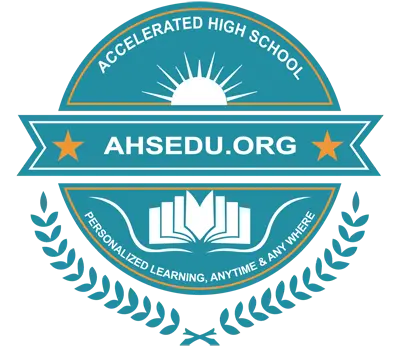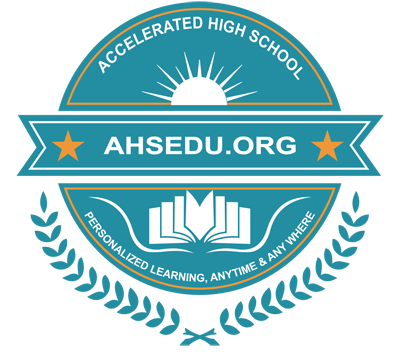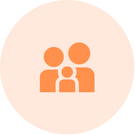Accelerated High School
Standardized Curriculum of Computer Science-V
In the 21st century, computer science and technology are vital for students. Understanding computer science means knowing how computers solve problems and create things like games and apps. It's essential because it helps us think about important things like staying safe online and being responsible with technology. Students learn about the Internet of Things, where everyday objects connect to the Internet and talk to each other. Plus, you'll discover how 3D printing lets us make real objects from digital designs. Learning about these things will help you make smart choices in our digital world.
Mission:
All students learn advanced spreadsheet techniques in a child-friendly manner, the basic concepts of 3D printing, the basics of the Internet of Things, deepened knowledge of cybersecurity with a focus on privacy, and advanced concepts of virtual and augmented reality. The focus of instruction is on developing an understanding of computers and the new approaches necessary to solve critical challenges that we, as American citizens, will need to harness the power of computing technology. Rapidly changing technologies and the proliferation of digital information have permeated and radically transformed learning, working, and everyday life. To be well-educated, globally-minded individuals in a world where computing technology is essential, students must have a clear understanding of computer science concepts and practices.
The study of these disciplines focuses on a deep understanding of concepts that enable students to think critically and systematically about leveraging technology to solve local and global issues. Authentic learning experiences that enable students to apply content knowledge, integrate concepts across disciplines, and develop computational thinking skills. All students have equitable access to a rigorous computer science education. Students will benefit from opportunities to engage in high-quality technology programs that foster their ability to develop and apply computational thinking to address real-world problems and design creative solutions.
Vision:
Prepare students to become technologically literate individuals who can effectively:
- Understand Basic Computer Concepts: Learn basic concepts about computers, their different parts, and the purpose of each component.
- Develop Basic Spreadsheet Skills: Gain foundational skills in using spreadsheets for data organization and analysis.
- Introduction to 3D Printing: Explore the basics of 3D printing technology and its applications.
- Learn About the Internet of Things (IoT): Understand the concept of IoT and how interconnected devices enhance everyday life.
- Understand Cybersecurity: Learn essential practices for staying safe and secure online.
- Explore Virtual and Augmented Reality (VR/AR): Discover the basics of VR and AR technologies and their various applications.
- Engage in Coding and Story Making: Learn basic programming languages and create interactive stories through coding.
- Solve Critical Challenges Using Technology: Apply computational thinking and problem-solving skills to address real-world issues with computing technology.
- Adapt to Rapidly Changing Technologies: Stay informed and adaptable in a world where technological advancements continually transform learning, working, and everyday life.
- Engage in Discussions and Investigations: Participate in discussions and conduct investigations to solve problems, focusing on the strength of evidence used to generate claims.
- Evaluate Digital Information Sources: Read and critically evaluate multiple sources to understand technological problems and solutions.
- Communicate Technological Ideas: Effectively communicate ideas through reports, presentations, and digital media that explain and argue technological concepts and solutions.
This vision aims to equip students with the knowledge and skills necessary to thrive as well-educated, globally-minded individuals in a world where computing technology is essential.
Spirit and Intent:
The curriculum at Accelerated High School (AHS) is designed to align closely with several educational standards, including the New Jersey Student Learning Standards for Computer Science [NJSLS-CS] introduced in 2023, the Student Learning Standards for Career Readiness, Life Literacies, and Key Skills, as well as the Student Learning Standards for Personal Financial Literacy and the New Jersey Preschool Teaching and Learning Expectations. This comprehensive alignment ensures that students receive a well-rounded education that covers computer science concepts and their real-world applications.
Students at AHS will understand basic computer concepts, develop basic spreadsheet skills, and gain an introduction to 3D printing and the Internet of Things (IoT). They will also learn essential cybersecurity practices and explore virtual and augmented reality (VR/AR) technologies. Engaging in coding, game-making, and learning programming languages will help students develop problem-solving skills. The curriculum emphasizes solving critical challenges using technology and staying informed about rapidly changing technological advancements.
By aligning with these state standards, AHS provides students with access to a wide range of practice questions carefully crafted to address each specific standard. This approach facilitates effective learning and helps students master essential skills, engage in discussions and investigations, evaluate digital information sources, and effectively communicate technological ideas through various digital media, reports, and presentations. This vision aims to equip students with the knowledge and skills necessary to thrive as well-educated, globally-minded individuals in a world where computing technology is essential.
Three Dimensions of AHS Computer Science Curriculum:
At Accelerated High School (AHS), our computer science curriculum is structured around three key dimensions that reflect what students should know and be able to do. These dimensions guide our standards, enabling us to assess students' understanding and provide flexibility in how they demonstrate their skills. Students participate in active learning that goes beyond reading about coding concepts. They engage in hands-on activities and projects that allow them to apply their knowledge and skills in practical ways, making learning relevant and exciting.
Computer Science Core Idea
|
Disciplinary Core Idea |
Performance Expectation |
|
Understand Basic Computer Concepts |
Identify different parts of a computer and their purposes. |
Computer Science and Engineering Practice
|
Computer Science and Engineering Practice |
Performance Expectation |
|
Engage in Discussions and Investigations |
Participate in computing and internet safety discussions. Conduct investigations to generate evidence-based claims. |
Crosscutting Concept
|
Crosscutting Concept |
Performance Expectation |
|
Adapt to New Technologies |
Learn about new technologies and how to use them. |
The curriculum is designed to be cumulative, where each learning experience builds on the previous ones. This approach helps students reinforce and expand their understanding over time, ensuring a solid foundation in computer science concepts and practices. Students are involved in progressive learning experiences that promote iterative improvement. Through regular practice, feedback, and reflection, they enhance their problem-solving abilities and refine their explanations and solutions. This continuous improvement mindset prepares them for complex challenges in computer science. By incorporating these three dimensions, AHS ensures that students engage deeply with computer science, develop a robust understanding of the subject, and are well-prepared to solve real-world problems using their computational skills.
Curriculum for Grade-V Computer Science:
Standard 1. Spreadsheet Techniques
Learning objectives:
- The development and modification of computing technology is driven by people’s needs.
- Data can be organized, displayed, and presented to highlight relationships.
- The type of data being stored affects the storage requirements.
- Individuals can select, organize, and transform data into different visual representations and communicate insights gained from the data.
- Many factors influence the accuracy of inferences and predictions
Topics of AHS-CS:
A. Basic Spreadsheet Techniques
- Introduction to Microsoft Excel
- Number formatting and entering numbers in Excel
- Addition and subtraction in Excel
- Multiplication and division in Excel
- Explore basis tables and charts in Excel
Standard 2. 3D printing
Learning objectives:
- A computing system is composed of software
- Real-world information can be stored and manipulated in programs as data (e.g., numbers, words, colors, images)
- Computers store data that can be retrieved later. Data can be copied, stored in multiple locations, and retrieved.
- A sequence of steps can be expressed as an algorithm that a computer can process.
Topics of AHS-CS:
C. Introduction to 3D Printing (Concepts)
- Explore the basic concepts of 3D printing.
- Understand how 3D printing works and its applications.
- Discuss the impact of 3D printing on various industries.
Standard 3. Internet of Things
Learning objectives:
- People work together to develop programs for a purpose, such as expressing ideas or addressing problems.
- Engineering design is a systematic and creative process of communicating and collaborating to meet a design challenge.
- Computer networks can be used to connect individuals to other individuals, places, information, and ideas. The Internet enables individuals to connect with others worldwide.
- Connecting devices to a network or the Internet provides great benefits, but care must be taken to use authentication measures, such as strong passwords, to protect devices and information from unauthorized access.
Topics of AHS-CS:
C. Internet of Things (IoT) Basics
- Introduce the basics of the Internet of Things.
- Explore how IoT devices communicate and collect data.
- Engage in simple IoT projects using microcontrollers.
Standard 4. Cybersecurity
Learning objectives:
- Computing technology has positively and negatively changed the way individuals live and work (e.g., entertainment, communication, productivity tools).
- Computer networks can be used to connect individuals to other individuals, places, information, and ideas. The Internet enables individuals to connect with others worldwide.
- Connecting devices to a network or the Internet provides great benefits, but care must be taken to use authentication measures, such as strong passwords, to protect devices and information from unauthorized access.
- Distinguishing between public and private information is important for safe and secure online interactions. Information can be protected using various security measures (i.e., physical and digital)
- Distinguishing between public and private information is important for safe and secure online interactions.
Topics of AHS-CS:
D. Cybersecurity and Privacy Best Practices
- Deepen knowledge of cybersecurity with a focus on privacy.
- Explore encryption, secure communication, and protecting user data.
- Discuss the legal and ethical aspects of privacy in technology.
Standard 5. Virtual and Augmented Reality (VR/AR)
Learning objectives:
- Computing technology has positively and negatively changed the way individuals live and work (e.g., entertainment, communication, productivity tools).
- Computer networks can be used to connect individuals to other individuals, places, information, and ideas. The Internet enables individuals to connect with others worldwide.
- Connecting devices to a network or the Internet provides great benefits, but care must be taken to use authentication measures, such as strong passwords, to protect devices and information from unauthorized access.
Topics of AHS-CS:
E. Virtual and Augmented Reality (VR/AR)
- Explore advanced concepts of virtual and augmented reality.
- Understand how VR/AR is used in various industries
Standard 6. Coding
Learning objectives:
- Computers follow precise sequences of steps that automate tasks
- The program development involves identifying a sequence of events, goals, and expected outcomes, and addressing errors (when necessary).
- Programs can be broken down into smaller parts to facilitate their design, implementation, and review. Programs can also be created by incorporating smaller portions of programs that already exist.
- Individuals develop programs using an iterative process involving design, implementation, testing, and review.
- A sequence of steps can be expressed as an algorithm a computer can process.
- Real-world information can be stored and manipulated in programs as data (e.g., numbers, words, colors, images).
Topics of AHS-CS:
F. Story making
- Add sprite
- Add a backdrop
- Glide Around
- Record a sound
- Hide and show
- Add effects
Standard 7. Programming Language
Learning objectives:
- Individuals develop and follow directions as part of daily life.
- The program development involves identifying a sequence of events, goals, and expected outcomes, and addressing errors (when necessary).
- A sequence of steps can be expressed as an algorithm a computer can process.
- Computers follow precise sequences of steps that automate tasks.
- Real-world information can be stored and manipulated in programs as data (e.g., numbers, words, colors, images).
- Computers follow precise sequences of steps that automate tasks.
- Programming languages provide variables, which are used to store and modify data.
- Programs can be broken down into smaller parts to facilitate their design, implementation, and review. Programs can also be created by incorporating smaller portions of programs that already exist.
- Individuals develop programs using an iterative process involving design, implementation, testing, and review.
Topics of AHS-CS:
G. Programming Language
- Snap
- Swift







